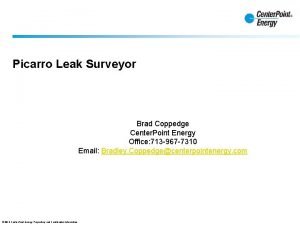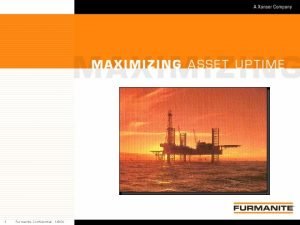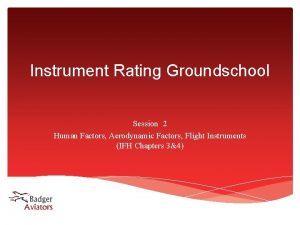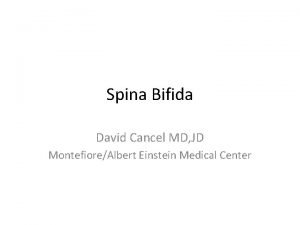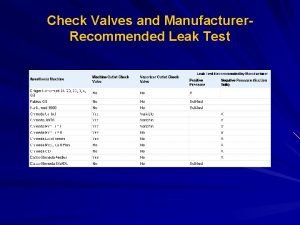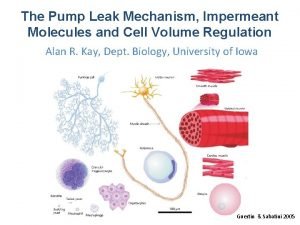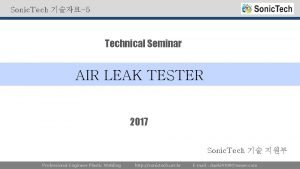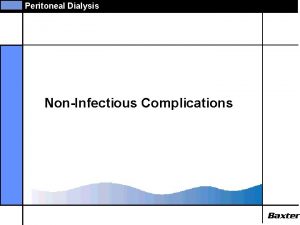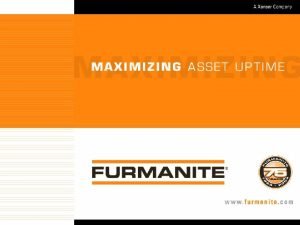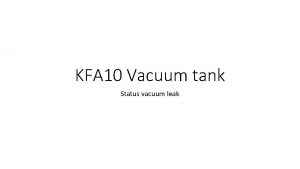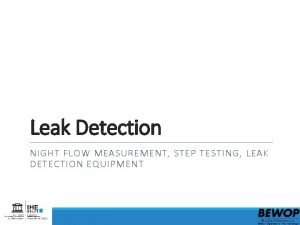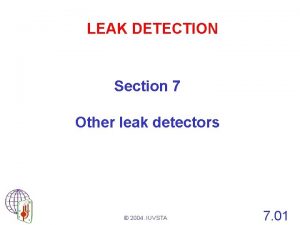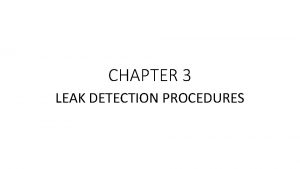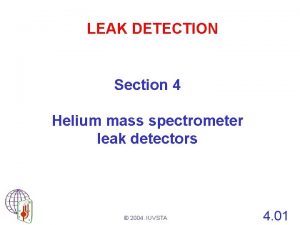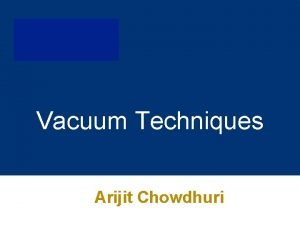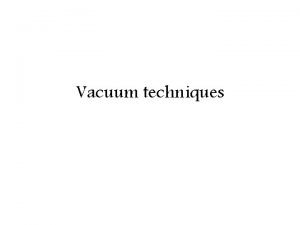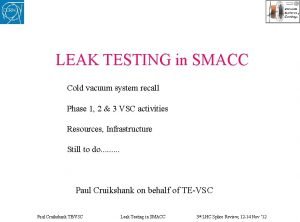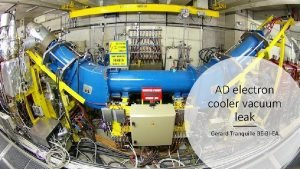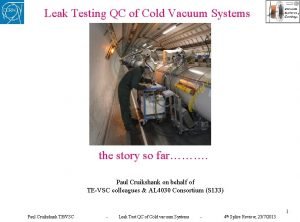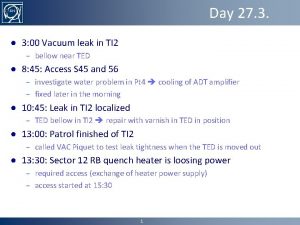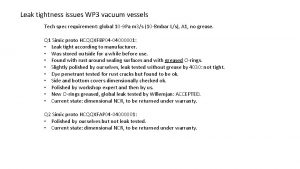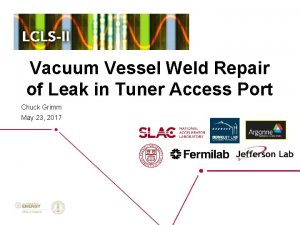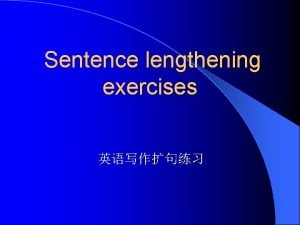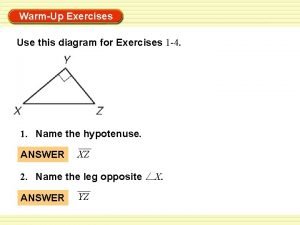VACUUM LEAK EXERCISES CAS VACUUM 6 16 JUNE
























- Slides: 24

VACUUM LEAK EXERCISES CAS VACUUM, 6 -16 JUNE 2107

1. A system at 20⁰C has to achieve 10 -9 mbar after prolonged pumping with a turbo molecular pump (SEFF = 300 Ls-1, independent of the gas type). What is the maximum allowable leakage?

2. A diffusion pump vacuum system with a chamber of 0. 75 m 3 is isolated from its pumps. The pressure increases from 2∙ 10 -3 mbar to 5∙ 10 -1 mbar in 10 minutes. A. What is the leakage rate, assuming no other gas source? B. After repairing a significant leak, the system could be evacuated to 5∙ 10 -5 mbar with the diffusion pump (SEFF = 2000 Ls-1). What leakage remains?

3. The vacuum vessel has a volume of 5 m 3. An air leak of 1. 05 E-6 mbarl/s is present. Q 1 Valve A SDP = 1000 L s-1 2 Sprimary = 36 m 3 h-1 Calculate the response time for 95% of the final signal on the leak detector when it is connected in position 1 with and without valve A open and the position 2 with and without valve B open. For each case, what is the signal on the detector when the leak is pocketed with helium ? Which of the 4 configurations is best for the leak test Valve B SLeak. Detector at Inlet = 1 L s-1

4. A human hair is trapped across an O-ring on a vacuum system where the internal; pressure is 10 -4 mbar and the external pressure is 103 mbar. The temperature is 20⁰C. Leakage of air into the vacuum system is occurring: A. If the trapped hair is a leak that can be regarded as a uniform tube of 70 um diameter (approximate diameter of a human hair) and length of about 8 mm with the above pressure the exit and entrance, respectively, what is the nature of the flow across the leak? B. Estimate the leakage (q. L)

GLOBAL HE LEAK DETECTION global He - flux de fuite Reference leak flow Qf. ref mbar l. s-1 Signal of the reference leak Sf. ref - Signal of the leak Sf - Residual value Sres He concentration conc % Leak rate Qf mbar. l. s-1 Global He – Sensibility of the test Mini readable value mli Sensibility of the tests Sensib. mbar. l. . s-1

REFERENCE LEAK Correction for the reference leak Initial value of the reference leak QFref mbarls-1 Year of the leak n Correction for the aging x %/an Difference of temperature ∆T deg C Correction for the temperature x %/deg. C Corrected flux for the calibrated leak QFref cor mbarls-1

RESPONSE TIME FOR LEAK DETECTION

INTRODUCTION: AIR LEAK IN CASE OF NEG COATED CHAMBER Bayard-Alpert Gauge (DPinj) Variable Length Bayard-Alpert Gauge (DPend) Air Leak Air: 78% N 2 + 20% O 2 + 2% Ar 9

PROBLEMATICS The system is baked and no active pumping is installed The installation of a leak detector imply: Connect a turbo molecular pumps on a valves: start the pump down Install the bake out on the valves + transition +TMP in order to do not impact the NEG performance Bake out at least over night After 1 day we could start the leak detection of the vacuum sector This approach is not convenient for the operation where a fast analysis is necessary and the beam downtime should be minimized

NEG PUMPING MECHANISM H 2: • Diffuses into the getter bulk even at room temperature, • Small quantities of H 2 do not affect the pumping of other gases. CO & CO 2: • Molecules chemically absorbed on the getter surface • No Diffusion in the bulk and affect the pumping speed of all the other gases, • CO capacity ≈ 5· 1014 molecules/cm 2 N 2 : • • No Diffusion in the bulk and the absorption takes place underneath the first monolayer of the surface, Six adsorption sites to pump a single N 2 molecule, N 2 capacity ≈ about 7 times lower than for CO Do not affect the pumping speed of CO O 2 & H 2 O: • The capacity of NEG for O 2 and H 2 O is estimated around 10 times larger than for CO

INTRODUCTION: LEAK IN CASE OF NEG COATED CHAMBERS Bayard-Alpert Gauge (DPinj) Variable Length Bayard-Alpert Gauge (DPend) Noble Gas The B-A sensitivity The effective conductance & Pumping speed in case of additional pumping 12

EXAMPLE OF A BA GAUGE A+ e- +100÷ 300 V i+10÷ 80 V i+ 0 V - Ions are produced in the volume enclosed by the grid. - The positive potential on the grid forms a barrier to the ions. - They are eventually collected at the central wire. 16

THE BA GAUGE SENSITIVITY The rate of ionization in the grid volume (I+/e) depends on: - the number of molecules in the grid volume (gas density n) - the ionization cross section for the specific gas at a specific electron energy (s) - the number of electrons traversing the grid per unit time (I -/e) - the average path length of the electrons in the grid (L) - the ion collection efficiency, for 100%: S is called the gauge sensitivity [S]=[Torr-1] It depends on: -the gas nature and electron energy; -the geometry and the electrostatic field; -the absolute temperature. 17

THE B-A SENSITIVITY: IONIZATION CROSS SECTION The maximum of the cross section is obtained for electron energy in the range 50 to 200 e. V. Energy variations in this range results in a limited variation of the cross section: less than a factor 2. For lower energies the variation is much steeper

THE CONDUCTANCE The quantity of gas which is flowing across a given pressure difference depends on the ease of flow, described by what we call CONDUCTANCE

THE CONDUCTANCE OF A BEAM PIPE • Cs = 15 l/s. m • D = 5 cm • Cs = 121 l/s. m • D = 10 cm L [m] C, air 20° [l/s] 1 15 1 121 5 3 5 23 10 1. 5 10 12. 1

THE CONDUCTANCE VS TEMPERATURE AND GAS • The conductance depends: • • Function of the temperature: • Function of the molars mass: T[K] 4. 2 77 150 300 500 600 1300 C [l/s] 20 88 122 100 224 245 361 Gaz H 2 He CH 4 H 2 O CO air O 2 Ar CO 2 M 2 4 16 18 28 29 40 44 32 Gaz H 2 He CH 4 H 2 O CO air O 2 Ar CO 2 C [l/s] 381 268 135 102 100 95 85 127 81

NOBLE GAS LEAK DETECTION

NEG LEAK DETECTION PROCEDURE Preparation Start Lab. View pressure logging (1 second) Open Variable Leak valve slowly (~50 x graduations), monitoring the pressure P 1 until ~1 x 10 -9 mbar : record P 1 & P 2 Helium Apply low flow helium gas to the VLV, monitor the pressure increase at P 2 and P 1 record P 1 , P 2 & helium leak detector measurement Close VVR and start timer, accumulate for 300 seconds: record P 1 & P 2 Argon Apply low flow argon gas to the VLV, monitor the pressure increase at P 2 and P 1 record P 1 P 2 & helium leak detector measurement Close VVR and start timer : after 300 s record P 1 & P 2

P 1 P 2 Bayard-Alpert Gauge (DPinj) Variable Length Bayard-Alpert Gauge (DPend) GAS P 1 P 2 Turbo Molecular Pump

P 2 P 1 Bayard-Alpert Gauge (DPinj) Variable Length Bayard-Alpert Gauge (DPend) GAS Turbo Molecular Pump Difference between P 1 and P 2 during dynamic injection of gases: Pressure Helium Pressure Argon Effective Pumping Speed TMP Helium Effective Pumping Speed TMP Argon P 1 3. 1 E-9 1. 5 e-8 43 43 P 2 7. 5 E-10 1. 8 e-9 11 4. 8 ≈4. 1 ≈ 8. 3 ≈ 3. 9 ≈ 9 Ratio Effective pumping speed in the system is the main parameter Sensitivity of the gauges play an important role: Argon higher measured pressure

P 1 GAS P 2 Bayard-Alpert Gauge (DPinj) Variable Length Bayard-Alpert Gauge (DPend) Turbo Molecular Pump

P 2 P 1 Bayard-Alpert Gauge (DPinj) Variable Length Bayard-Alpert Gauge (DPend) GAS Difference between P 1 and P 2 during accumulation of gases: DP Helium DP Argon P 1 = P 2 1. 5 e-6 1. 05 e-8 Time 5’ 45 ‘’ 5’ 15’’ Volume [l] Q mabrl/s 3. 3 ≈1. 5 e-8 ≈ 1. 05 e-9 Effective leak rate is the main parameter Sensitivity of the gauges play a minor role
 Start lab
Start lab Pawel okonski
Pawel okonski Memory leak and dangling pointer
Memory leak and dangling pointer Purify memory leak
Purify memory leak Gas leak
Gas leak Dry vs wet suction chest tube
Dry vs wet suction chest tube Dottrace memory leak
Dottrace memory leak Leak
Leak Songheli leaked
Songheli leaked Centerpoint energy
Centerpoint energy Furmanite sealing compound
Furmanite sealing compound Pitot static failures
Pitot static failures Dlpp-253
Dlpp-253 Leak point
Leak point Csf leak
Csf leak Sandra adamsson live
Sandra adamsson live Negative pressure leak test
Negative pressure leak test Kira dusterwald
Kira dusterwald Leak biliare strasberg
Leak biliare strasberg Leak test 계산식
Leak test 계산식 Xenon cos leaks
Xenon cos leaks Pericatheter leak meaning
Pericatheter leak meaning Private lipasti
Private lipasti Python memory leak tools
Python memory leak tools Furmanite leak sealing
Furmanite leak sealing









